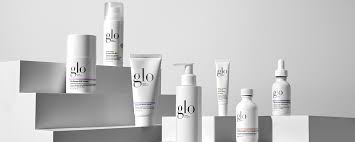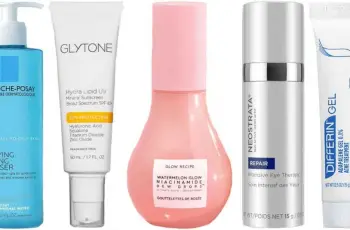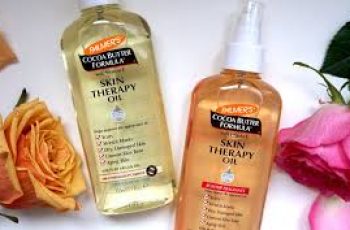
The Best Order for Applying Skincare Products: A Step-by-Step Guide
Achieving glowing, healthy skin requires more than just great products—it’s also about the proper order in which you apply them.
If you’ve ever wondered whether you should apply serum before or after moisturizer, or what happens if you mix them up, you’re not alone!
The order in which you layer your skincare can impact the effectiveness of each product, and yes, applying them “out of order” can make a difference.
Let’s break down the optimal order of skincare application, the importance of serum vs. moisturizer, and some tips for combining products for the best results.
Optimal Order of Skincare Application
Dermatologists recommend applying skincare products in the order of lightest to heaviest. This helps ensure that your products absorb properly and function optimally.
The general rule is to start with products that are the thinnest (usually water-based) and gradually work up to thicker, more emollient ones (like creams and oils).
Here’s a common skincare routine, step-by-step:
Cleanser: Start by washing your face to remove dirt, oil, and impurities. This ensures your skin is clean and ready to absorb other products.
Toner (optional): Helps balance the skin’s pH and prepares it for better absorption. Sensitive skin tip: Skip this step if toners irritate your skin.
Serum: Serums are packed with active ingredients and have a thinner consistency. They target specific skin concerns (e.g., brightening, hydration, anti-aging). For instance, Foundation Skincare’s Vitamin C Lotion 20% would go on here for its brightening benefits.
Moisturizer: The next step is to hydrate and lock in moisture with a thicker product. Hyaluronic Acid Lotion is a great option here, providing deep hydration.
Sunscreen: Don’t forget sunscreen in the morning to protect your skin from UV damage! Dermatologists recommend a minimum SPF of 30 (or 50 for the face).
Why Apply Serum Before Moisturizer?
Serums tend to have a lightweight, fast-absorbing texture, designed to penetrate deep into the skin.
They contain concentrated active ingredients such as vitamins, peptides, and antioxidants, making them ideal for targeting specific skin concerns (like fine lines, hyperpigmentation, or dehydration).
Moisturizers, on the other hand, are thicker and designed to sit on the skin’s surface, providing a barrier that locks in hydration and prevents moisture loss.
By applying serum before moisturizer:
The serum can penetrate deeply into the skin without any barrier, delivering the active ingredients where they are most effective.
The moisturizer then locks in the serum’s benefits, keeping the skin hydrated and preventing water loss.
What Happens If You Apply Moisturizer Before Serum?
If you apply moisturizer first, you may notice a few things:
Reduced absorption of serum: The thicker texture of the moisturizer can form a barrier on the skin’s surface, preventing the serum’s active ingredients from absorbing effectively.
Less effective skincare: Because the serum’s ingredients won’t be able to penetrate deeply, you might not experience the full benefits, and the product won’t work as well as it should.
Textural issues: If you’re applying skincare before makeup, applying moisturizer first could lead to uneven product layering, making your skin feel greasy or look patchy under makeup.
Serum and Moisturizer Ingredients You Shouldn’t Mix
While most serums and moisturizers work well together, there are some ingredient combinations to avoid, as they can lead to irritation or reduce the effectiveness of your products:
Retinoids + AHA/BHA: Both retinoids (found in products like Nightly Renewal Cream) and alpha-hydroxy acids (AHAs) or beta-hydroxy acids (BHAs) exfoliate the skin.
Combining them can increase the risk of irritation and dryness. Instead, you can use them on alternate nights or in different parts of your routine (e.g., retinoids at night and AHA/BHA in the morning).
Retinoids + Benzoyl Peroxide: Benzoyl peroxide can reduce the effectiveness of retinoids, so avoid using both at the same time unless the product specifically says it’s safe.
Retinoids + Vitamin C: Vitamin C can destabilize retinoids, rendering them less effective. Use Vitamin C Lotion in the morning and apply retinoids like Nightly Renewal Cream at night to avoid interference.
Retinoids + Salicylic Acid: Using retinoids and salicylic acid together might dry out the skin and lead to irritation. Alternate their use (one night with retinoids, the next with salicylic acid).
Best Serum and Moisturizer Product Combinations
Here’s how to combine Foundation Skincare products effectively for maximum benefit:
Cleanser: Start with a gentle face wash to remove impurities and prepare your skin.
Niacinamide Lotion (optional): This anti-inflammatory lotion helps support skin barrier function and promote healthy skin. If using this, apply it right after cleansing, like a serum.
Vitamin C Lotion 20%: Vitamin C is fantastic for brightening and protecting the skin. After your Niacinamide Lotion absorbs, follow with the Vitamin C Lotion.
Apply this in the morning for optimal sun protection and skin brightening.
Nighttime Alternative: Use Nightly Renewal Cream, which contains Granactive Retinoid, at night instead of Vitamin C Lotion. This product tackles fine lines, acne, and aging.
Hyaluronic Acid Lotion: This is your hydrating, thicker product. Apply after serum (or Vitamin C) to lock in moisture.
Azelaic Acid Cream (optional): If you’re dealing with acne, rosacea, or hyperpigmentation, this can be used as a final layer after your moisturizer (morning or night).
Sunscreen: Make sure you apply sunscreen with SPF 30 or higher in the morning to protect your skin from UV damage. Sunscreen is vital for preventing aging and pigmentation!
Simplified Routine for Busy Days
If the full routine feels like too many steps, you can simplify it without losing effectiveness:
Morning:
Vitamin C Lotion 20%, Moisturizer, Sunscreen
Night:
Nightly Renewal Cream, Hyaluronic Acid Lotion
By sticking to these essential products, you can achieve glowing, healthy skin with minimal effort!
Final Tips for the Best Results
Be patient: Give each product time to absorb into your skin before applying the next one. About 1-2 minutes between steps is ideal.
Customize your routine: Your skin’s needs can change depending on factors like age, climate, or skin type, so be flexible with your routine.
Always patch-test new products: Before incorporating a new serum or moisturizer, perform a patch test to avoid adverse reactions.
By following the right order and avoiding ingredient clashes, you can ensure your skincare products work in harmony, delivering the best possible results for your skin.


